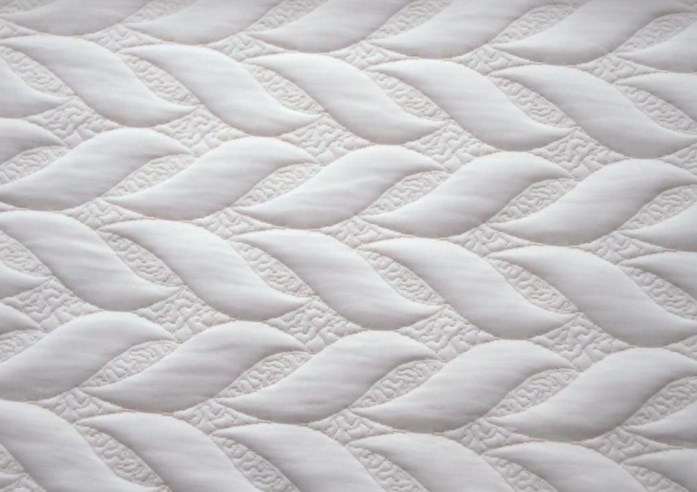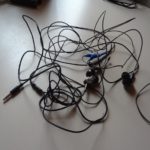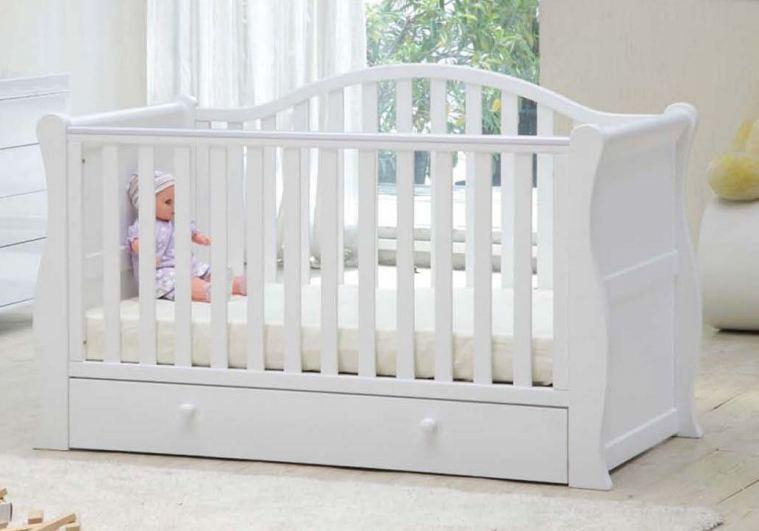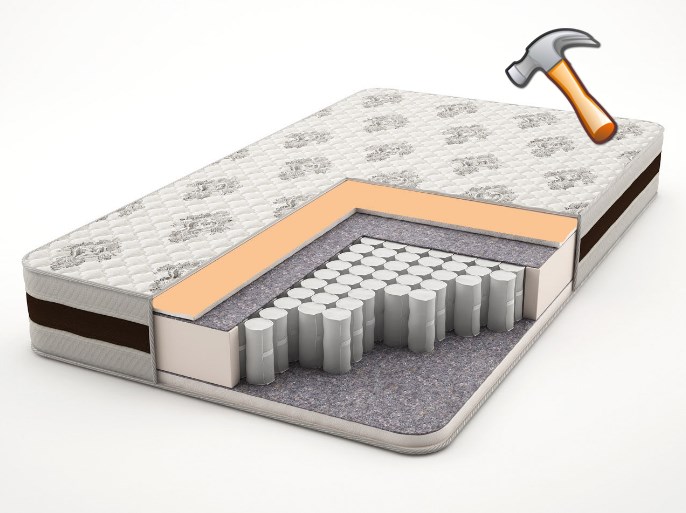How to choose a children's mattress
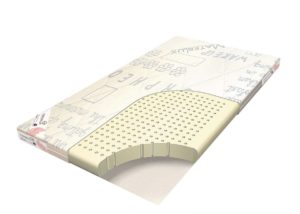 Sleep is a time that should not be taken lightly, especially when it comes to young children. Their musculoskeletal system, internal organs, and psychological characteristics are formed. Not only his mood depends on how a child gets enough sleep. His health depends on it.
Sleep is a time that should not be taken lightly, especially when it comes to young children. Their musculoskeletal system, internal organs, and psychological characteristics are formed. Not only his mood depends on how a child gets enough sleep. His health depends on it.
Attention! An improperly organized place to sleep is the first step towards the emergence and development of diseases of the musculoskeletal system, primarily scoliosis.
If you choose a mattress thoughtfully, paying attention not to fashion trends, but to the needs of the child, you will be able to avoid many unpleasant consequences. The baby gets enough sleep, his spine and skeleton develop correctly, and the digestive system does not encounter additional problems. The choice will not create any special troubles.
Trading companies offer a wide range of high-quality bedding items. You just need to listen to the qualified advice of specialists and take into account several important points. We are talking about the child’s age, his build, and state of health. Cost is often a secondary issue; it is not so rare to come across high-quality products at a low price.
The content of the article
Choosing a children's mattress for a newborn
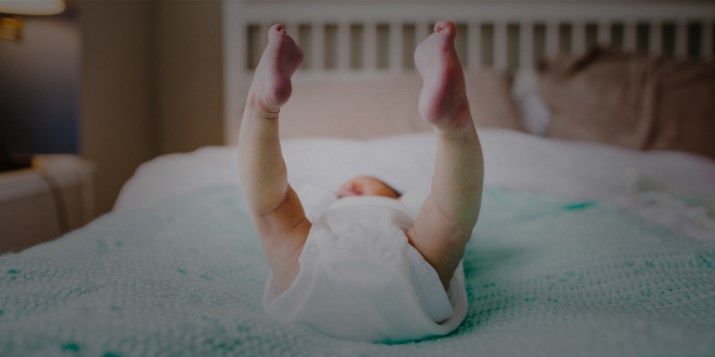 Main function of the mattress — make the sleeping place comfortable. When it comes to a newborn, the mattress should be moderately soft.The main thing is that the spine remains straight and the baby is comfortable. It should be remembered that a newborn can sleep fifteen hours a day.
Main function of the mattress — make the sleeping place comfortable. When it comes to a newborn, the mattress should be moderately soft.The main thing is that the spine remains straight and the baby is comfortable. It should be remembered that a newborn can sleep fifteen hours a day.
Don’t be tempted to leave your baby’s older brother or sister’s mattress. Like other bedding, this is a purely individual thing. Used litter, no matter how high-quality it is, becomes saturated with odors over time and loses its shape and properties.
Standard sizes
Typically, products for newborns with the following length and width are considered standard:
- 120 x 60 centimeters;
- 125 x 65 centimeters;
- 140 x 70 centimeters.
When shopping, you should remember the size of the bed. If it does not fit into the standards, you can order individual mattress sizes.
The thickness for the smallest is usually 5–8 centimeters. There can be more, it all depends on the filler.
Standard mattress sizes Quite enough even for a large baby in height and weight. There will be enough space for both toys and turning over. Too large cribs and mattresses are primarily uncomfortable for the mother.
Type
 Spring mattresses come in two types - with dependent and independent spring block. The second type has many advantages over the first, but its main disadvantage is the high cost of the option for a newborn. Naturally, such mattresses contain other fillings besides metal.
Spring mattresses come in two types - with dependent and independent spring block. The second type has many advantages over the first, but its main disadvantage is the high cost of the option for a newborn. Naturally, such mattresses contain other fillings besides metal.
Springless ones differ from each other primarily in the filler. This can be foam rubber (polyurethane foam), coconut shavings (coir), artificial or natural latex and much more. Often, a mattress may contain multiple layers of fillings, such as alternating latex and coconut coir.
Experienced doctors advise immediately abandoning spring products, since they are inferior to springless ones in almost all respects. But choose a mattress with independent spring block It is possible, but it will be unreasonably expensive.
If we compare spring and springless mattresses:
- Dust. In springless mattresses, its accumulation is practically eliminated, while in spring mattresses there is more than enough space, and static electricity also acts. Dust not only interferes with normal breathing, but dust mites also accumulate in it.
- Moisture resistant. Even stainless iron is susceptible to corrosion, not to mention ordinary carbon steel. The fillers of springless mattresses are completely free from this drawback.
- Accumulation of static electricity. Where there is iron, there is static charge. The fillers of springless mattresses have nowhere for metal to come from.
- Reliability. Although this issue is secondary in the case of a baby, if a spring mattress lasts up to ten years, then a springless mattress lasts one and a half times longer.
Springless mattresses, regardless of what they are filled with, are absolutely harmless for children. The fear of polyurethane foam or artificial latex is absolutely unfounded; they do not emit any harmful substances in noticeable quantities, while natural substances can be very dangerous. Mattresses without springs, depending on their hardness, have good orthopedic characteristics, and even retain them for a long time.
The conclusion is clear — a springless model with correctly selected filler is more suitable for a baby.
Fillers
 Polyurethane foam. Everyone knows this filler called foam rubber, imagining a soft sheet that cannot in any way be orthopedic. This is wrong.The chemical industry has long been producing polyurethane foam with various characteristics, and it is quite possible to select an option based on rigidity that is ideal for a baby. Modern-looking foam rubber will withstand active baby play without losing its shape for a long time. The material does not pose a health hazard and does not cause allergic reactions.
Polyurethane foam. Everyone knows this filler called foam rubber, imagining a soft sheet that cannot in any way be orthopedic. This is wrong.The chemical industry has long been producing polyurethane foam with various characteristics, and it is quite possible to select an option based on rigidity that is ideal for a baby. Modern-looking foam rubber will withstand active baby play without losing its shape for a long time. The material does not pose a health hazard and does not cause allergic reactions.
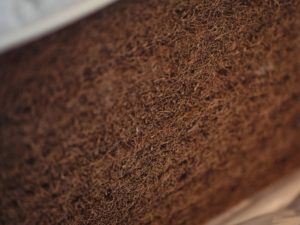 Coconut coir. A material that is environmentally friendly, hypoallergenic, and has a massaging effect. It is absolutely harmless to health, does not accumulate moisture and has many other advantages. But a baby of several months does not need a massaging effect; it will come in handy later. Naturally, coir can be not only the top layer of a mattress, but this is a separate case. However, many pediatricians recommend coir for its orthopedic benefits.
Coconut coir. A material that is environmentally friendly, hypoallergenic, and has a massaging effect. It is absolutely harmless to health, does not accumulate moisture and has many other advantages. But a baby of several months does not need a massaging effect; it will come in handy later. Naturally, coir can be not only the top layer of a mattress, but this is a separate case. However, many pediatricians recommend coir for its orthopedic benefits.
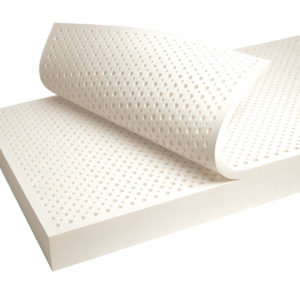 Latex. Natural is practically unvulcanized rubber. An excellent material, the distinctive feature of which is its antibacterial and antifungal capabilities and the complete absence of rotting. This material also does not accumulate water and dust, and due to its mechanical characteristics it is ideal for filling orthopedic mattresses. By itself, it may be too soft for newborns, but if there are layers of harder material, the best solution is not easy to find. Much the same can be said about artificial latex, which is also produced with specified properties.
Latex. Natural is practically unvulcanized rubber. An excellent material, the distinctive feature of which is its antibacterial and antifungal capabilities and the complete absence of rotting. This material also does not accumulate water and dust, and due to its mechanical characteristics it is ideal for filling orthopedic mattresses. By itself, it may be too soft for newborns, but if there are layers of harder material, the best solution is not easy to find. Much the same can be said about artificial latex, which is also produced with specified properties.
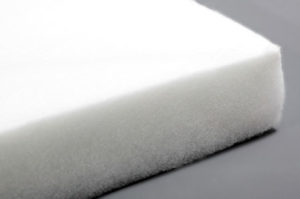 Holofiber. Excellent filler made from specially twisted synthetic fibers. At a certain density, it creates an orthopedic effect that is suitable for a baby. No particularly harmful emissions or other dangerous properties have been detected in holofiber.
Holofiber. Excellent filler made from specially twisted synthetic fibers. At a certain density, it creates an orthopedic effect that is suitable for a baby. No particularly harmful emissions or other dangerous properties have been detected in holofiber.
 Memory Foam. A material that is credited with almost miraculous properties due to the fact that for some time it remembers the shape squeezed out by the body of a person lying on it. There are suspicions that Memory Foam is great for solving marketing problems, but the baby has no particular need to remember dents.
Memory Foam. A material that is credited with almost miraculous properties due to the fact that for some time it remembers the shape squeezed out by the body of a person lying on it. There are suspicions that Memory Foam is great for solving marketing problems, but the baby has no particular need to remember dents.
Material of manufacture
A cover is a fabric, the selection of which for a baby is important. It should “breathe”, dry quickly, be pleasant to the touch, not cause allergic reactions, be soft and at the same time quite durable, and not accumulate a static charge.
Calico. The simplest and cheapest option. But it’s better not to save money, otherwise the child will almost always sleep on a wet mattress.
Teak. Cotton fabric with improved characteristics, dense and wear-resistant.
StressFree. Modern two-layer material, the upper part of which consists of natural cotton, the lower part of synthetic fibers. It allows liquid to pass through, dries quickly, does not accumulate a static charge, and does not wear out when washed. Ideal for a children's mattress. In general, it is best to choose fabrics that consist of natural and artificial fibers. They, for example, jacquard, do not have many disadvantages and have proven themselves well as bedding.
Bamboo fabric. Exotic, but great material for a case. It absorbs moisture quickly and dries quickly. “Breathes”, pleasant to the touch, has antistatic properties.
Rigidity
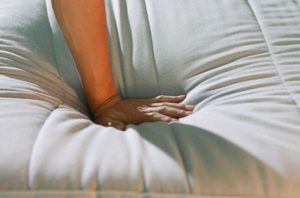 The famous pediatrician Dr. Komarovsky recommends choosing a mattress that bends two or three centimeters when pressed lightly with your fingers. This is approximately what an average level of hardness looks like, which will suit a baby without any visible health problems.It also should not be too hard and too soft - this is the main rule for determining the required rigidity.
The famous pediatrician Dr. Komarovsky recommends choosing a mattress that bends two or three centimeters when pressed lightly with your fingers. This is approximately what an average level of hardness looks like, which will suit a baby without any visible health problems.It also should not be too hard and too soft - this is the main rule for determining the required rigidity.
Conclusion
The best choice for a newborn is an orthopedic mattress of medium hardness, with a harmless filler and a cover made of mixed natural and synthetic fibers. What exactly it is made of is not so important.
Choosing a children's mattress for a child over 3 years old
 A child who is already three years old already has a practically formed skeletal system, or at least formed bends. For children at this age, you can already select softer options, but this is not essential. The requirements remain essentially the same as for a newborn.
A child who is already three years old already has a practically formed skeletal system, or at least formed bends. For children at this age, you can already select softer options, but this is not essential. The requirements remain essentially the same as for a newborn.
Dimensions
A mattress measuring 70 x 160 centimeters is quite suitable for a child from three years old, and will even be enough for him to grow up to ten years old. As for the thickness, it is determined by the type of filler. For example, 10–14 centimeters for a springless mattress will be just right.
Type
It is advisable to leave a springless mattress, especially for active children. But you can already purchase mattresses with an independent spring block, but with a large number of springs.
Fillers
A three-year-old can already be allowed to sleep on softer latex, but other fillers are also quite suitable. Described above.
Textile
The requirements for the fabric from which the cover is made do not change.
Rigidity
The overall stiffness for the baby should remain at the same level, but you can, as mentioned above, choose softer options.
Choosing a mattress for a teenager over 10 years old
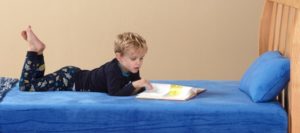 In a teenager from ten years of age, the formation of the bone base of the body continues, muscle mass increases, bone tissue replaces cartilage.A child at this age is especially active; he needs a supply of energy for the day, which means healthy, full sleep.
In a teenager from ten years of age, the formation of the bone base of the body continues, muscle mass increases, bone tissue replaces cartilage.A child at this age is especially active; he needs a supply of energy for the day, which means healthy, full sleep.
Dimensions
Sizes are the same as for adults. If we are talking about a single bed, then it is 80 x 190 centimeters, 80 x 195 centimeters, 80 x 200 centimeters. Thickness – up to 20 centimeters.
Type
A mattress with a bound spring block is not recommended until adulthood. The option with independent springs will be just right, as will the option with latex filler.
Fillers
Latex filling is the best thing that can be in a mattress for a teenager.
Textile
The requirements for fabric are universal; they do not change for anyone.
Rigidity
The hardness may be average, but coir is not required if there are no problems with the musculoskeletal system. If you have doubts about this, you should consult an orthopedic doctor.
Conclusion
Mattresses for newborns, primary school children and teenagers should be quite hard, but with age the level of softness can be increased. Sizes always depend on the height and build of the child and on the choice of standard options. With rare exceptions, almost all fillers are suitable, if we keep in mind the popular ones. Linked box springs are a thing of the past, best left in history.

